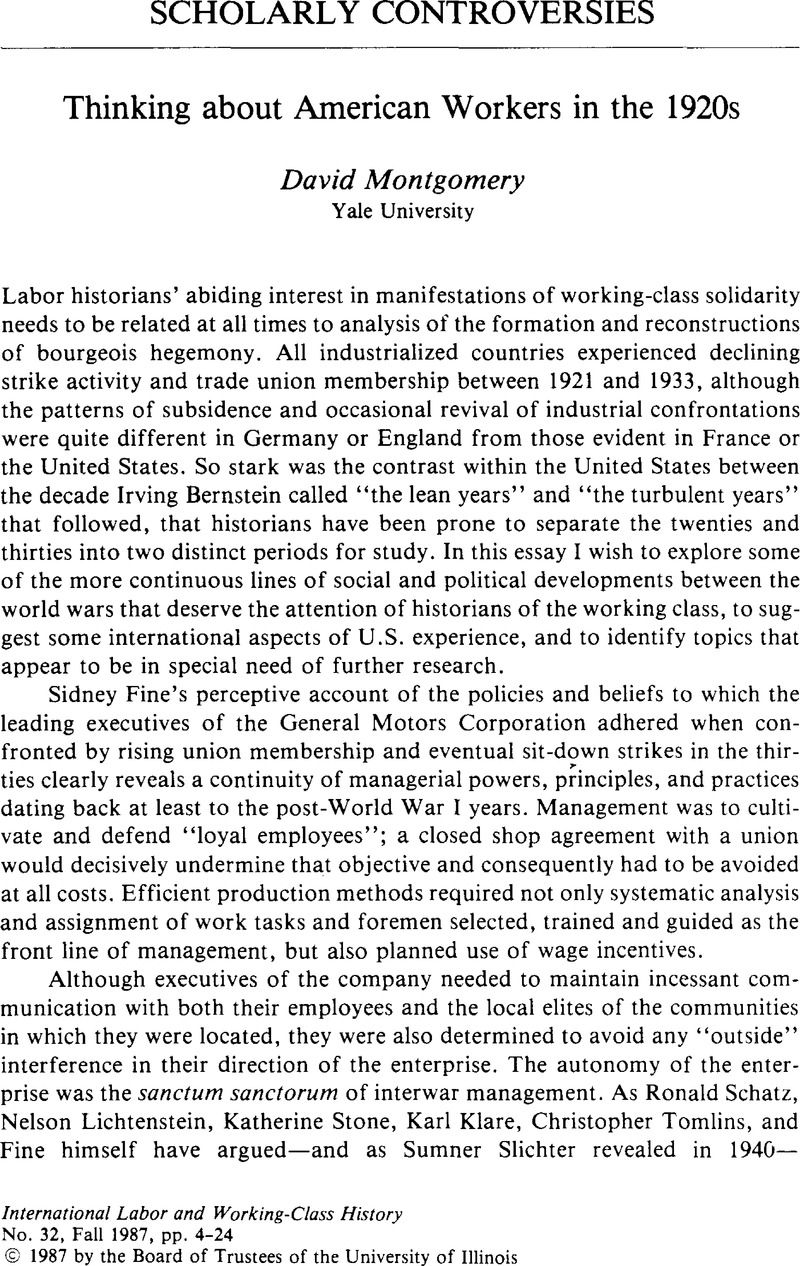Crossref Citations
This article has been cited by the following publications. This list is generated based on data provided by Crossref.
Barrett, James R.
1988.
The Transplanted: Workers, Class, and Labor.
Social Science History,
Vol. 12,
Issue. 3,
p.
221.
McCartin, Joseph A.
1997.
Abortive Reconstruction: Federal War Labor Policies, Union Organization, and the Politics of Race, 1917–1920.
Journal of Policy History,
Vol. 9,
Issue. 2,
p.
155.
Laugen, R. Todd
2005.
Struggles for the Public Interest: Organized Labor and State Mediation in Postwar America.
The Journal of the Gilded Age and Progressive Era,
Vol. 4,
Issue. 1,
p.
69.
Hodges, Adam J.
2019.
UNDERSTANDING A NATIONAL AND GLOBAL RED SCARE/RED SUMMER THROUGH THE LOCAL INVENTION OF SOLIDARITIES.
The Journal of the Gilded Age and Progressive Era,
Vol. 18,
Issue. 1,
p.
81.





